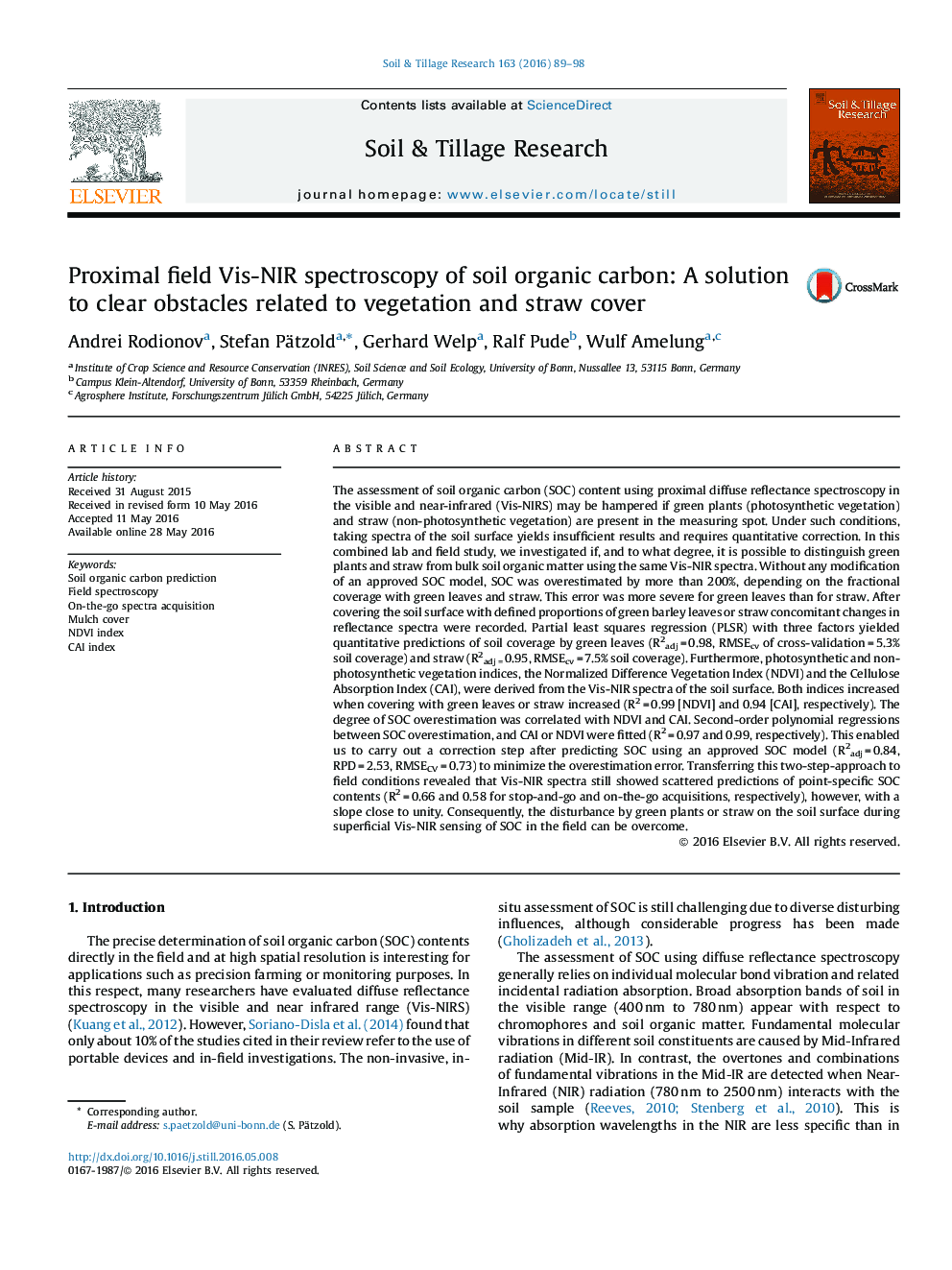| کد مقاله | کد نشریه | سال انتشار | مقاله انگلیسی | نسخه تمام متن |
|---|---|---|---|---|
| 305359 | 513025 | 2016 | 10 صفحه PDF | دانلود رایگان |

• Soil surface covering impeded Vis-NIRS SOC prediction under field conditions.
• Straw and green plants on the soil surface led to severe SOC overestimation.
• Straw and green plants were indicated by NDVI and CAI as derived from spectra.
• SOC overestimation was quantified from NDVI and CAI to correct SOC prediction.
• Proximal SOC sensing in the field finally succeeded on partially covered surface.
The assessment of soil organic carbon (SOC) content using proximal diffuse reflectance spectroscopy in the visible and near-infrared (Vis-NIRS) may be hampered if green plants (photosynthetic vegetation) and straw (non-photosynthetic vegetation) are present in the measuring spot. Under such conditions, taking spectra of the soil surface yields insufficient results and requires quantitative correction. In this combined lab and field study, we investigated if, and to what degree, it is possible to distinguish green plants and straw from bulk soil organic matter using the same Vis-NIR spectra. Without any modification of an approved SOC model, SOC was overestimated by more than 200%, depending on the fractional coverage with green leaves and straw. This error was more severe for green leaves than for straw. After covering the soil surface with defined proportions of green barley leaves or straw concomitant changes in reflectance spectra were recorded. Partial least squares regression (PLSR) with three factors yielded quantitative predictions of soil coverage by green leaves (R2adj = 0.98, RMSEcv of cross-validation = 5.3% soil coverage) and straw (R2adj = 0.95, RMSEcv = 7.5% soil coverage). Furthermore, photosynthetic and non-photosynthetic vegetation indices, the Normalized Difference Vegetation Index (NDVI) and the Cellulose Absorption Index (CAI), were derived from the Vis-NIR spectra of the soil surface. Both indices increased when covering with green leaves or straw increased (R2 = 0.99 [NDVI] and 0.94 [CAI], respectively). The degree of SOC overestimation was correlated with NDVI and CAI. Second-order polynomial regressions between SOC overestimation, and CAI or NDVI were fitted (R2 = 0.97 and 0.99, respectively). This enabled us to carry out a correction step after predicting SOC using an approved SOC model (R2adj = 0.84, RPD = 2.53, RMSECV = 0.73) to minimize the overestimation error. Transferring this two-step-approach to field conditions revealed that Vis-NIR spectra still showed scattered predictions of point-specific SOC contents (R2 = 0.66 and 0.58 for stop-and-go and on-the-go acquisitions, respectively), however, with a slope close to unity. Consequently, the disturbance by green plants or straw on the soil surface during superficial Vis-NIR sensing of SOC in the field can be overcome.
Journal: Soil and Tillage Research - Volume 163, November 2016, Pages 89–98